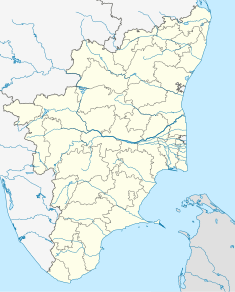
Tamil Jains are ethnic-Tamils from the Indian state of Tamil Nadu, who practice Jainism, chiefly the Digambara school. The Tamil Jain is a microcommunity of around 85,000, including both Tamil Jains and north Indian Jains settled in Tamil Nadu. They are predominantly scattered in northern Tamil Nadu, largely in the districts of Tiruvannamalai, Kanchipuram, Vellore, Villupuram, Ranipet and Kallakurichi. Early Tamil-Brahmi inscriptions in Tamil Nadu date to the third century BCE and describe the livelihoods of Tamil Jains. Samaṇar wrote much Tamil literature, including the important Sangam literature, such as the Nālaṭiyār, the Silappatikaram, the Valayapathi and the Seevaka Sinthamaṇi. Three of the five great epics of Tamil literature are attributed to Jains.
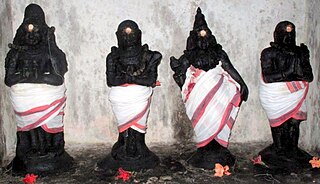
Tirumurai is a twelve-volume compendium of songs or hymns in praise of Shiva in the Tamil language from the 6th to the 11th century CE by various poets in Tamil Nadu. Nambiyandar Nambi compiled the first seven volumes by Appar, Sambandar, and Sundarar as Tevaram during the 12th century. During the course of time, a strong necessity was felt by scholars to compile Shaiva literature to accommodate other works. Tiruvasakam and Tirukovayar by Manickavasagar are included as the eighth, nine parts are compiled as the ninth Tirumurai out of which most are unknown, and the tenth as Tirumandiram by Tirumular, the famous Siddhar. The eleventh is compiled by Karaikal Ammaiyar, Cheraman Perumal and others. The contemporary Chola king was impressed by the work of Nambi and included Nambi's work in the eleventh Tirumurai. Sekkilar's Periya Puranam, composed a century later, contains the life depiction of all the 63 Nayanmars. The response for the work was so tremendous among Shaiva scholars and Kulothunga Chola II that it was included as the 12th Tirumurai. Tirumurai along with Vedas and Shaiva agamas form the basis of Shaiva Siddantha philosophy in South India and Sri Lanka.
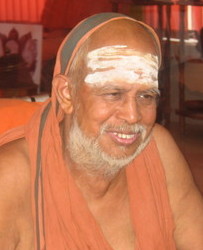
Jagadguru Sri Jayendra Saraswathi Shankaracharya was the 69th Shankaracharya Guru and head or pontiff (Pïțhādhipati) of the Kanchi Kamakoti Peetham. Subramanyam Mahadeva Iyer was nominated by his predecessor, Chandrashekarendra Saraswati, as his successor and was given the pontifical title Sri Jayendra Saraswathi on 22 March 1954.
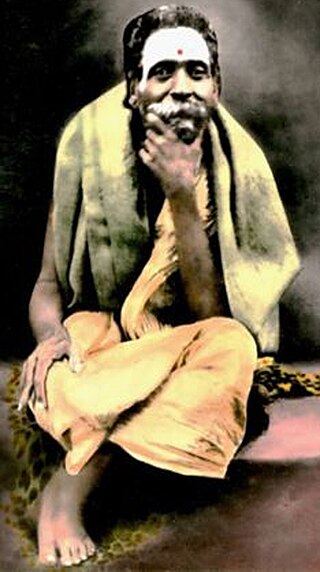
Sri Seshadri Swamigal, also known as the "Saint with a Golden Hand", was a male Indian saint born in Kanchipuram, Tamil Nadu, but who predominantly lived in Thiruvannaamalai where he attained Samadhi.

Maraimalai Adigal was a Tamil orator and writer and father of Pure Tamil movement. He was a fervent Tamizh Saivite. He wrote more than 100 books, including works on original poems and dramas, but most famous are his books on his research into Tamil literature. Most of his literary works were on Saivism. He founded a Saivite institution called Podhunilaik Kazhagam. He was an exponent of the Pure Tamil movement and hence considered to be the father of Tamil linguistic purism. He advocated the use of Tamil devoid of Sanskrit words and hence changed his birth name Vedhachalam to Maraimalai.

Appar, also referred to as Tirunāvukkarasar or Navukkarasar, was a seventh-century Tamil Śaiva poet-saint. Born in a peasant Śaiva family, raised as an orphan by his sister, he lived about 80 years and is generally placed sometime between 570 and 650 CE. Appar composed 4,900 devotional hymns to the god Shiva, out of which 313 have survived and are now canonized as the 4th to 6th volumes of Tirumurai. One of the most prominent of the sixty-three revered Nayanars, he was an older contemporary of Thirugnana Sambandar.

Arunachalesvara Temple is a Hindu temple dedicated to the deity Shiva, located at the base of Arunachala hill in the town of Thiruvannamalai in Tamil Nadu, India. It is significant to the Hindu sect of Shaivism as one of the temples associated with the five elements, the Pancha Bhoota Stalas, and specifically the element of fire, or Agni.

Swami Vipulananda, also known as Vipulananda Adigal, was a Sri Lankan Tamil Hindu social reformer, literary critic, author, poet, teacher and ascetic from the Eastern Province of Sri Lanka. Vipulananda was an early pioneer associated with the Indian-based Ramakrishna Mission in Sri Lanka. Along with other reformers, Vipulananda was instrumental in the revival of the Hindu religion and native traditions in Sri Lanka after a long period of dormancy and decline during the previous 500 years of colonial rule by various European powers.

Sirkazhi Govindarajan was an Indian Tamil Carnatic vocalist and a leading playback singer of Indian cinema.
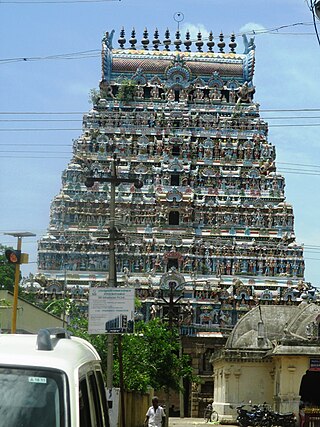
Mahalingeswaraswamy Temple, Thiruvidaimarudur is a Hindu temple dedicated to the deity Shiva, located in Tiruvidaimaruthur, a village in the South Indian state of Tamil Nadu. It is significant to the Hindu sect of Saivism as one of the seven major Shiva temples. Shiva is worshiped as Mahalingeswaraswamy, and is represented by the lingam, with his idol referred to as Jyothirmayalingam. His consort Mookambika is depicted as Devi Bruhatsundarakuchaambika or Bruhatsundarakuchaambigai amman. The lingam of the temple is believed to be the focal point for the seven consorts of Shiva. The presiding deity is revered in the 7th century Tamil Saiva canonical work, the Tevaram, written by Tamil poet saints known as the nayanars and classified as Paadal Petra Sthalam. The 9th century Saiva saint poet Manikkavacakar has sung praise about the temple in his works. Pattinattar, one of the revered saints visited this shrine many times.

Dharumapuram Aadheenam is a Saivite monastic institution based in the town of Mayiladuthurai, Tamil Nadu. As of 2019, there were a total of 27 Shiva temples under the control of the adheenam.

Tiruvannamalai district is the largest and one of the 38 districts in the state of Tamil Nadu, in South India. It was formed in the year 1989 through the bifurcation of North Arcot into the Tiruvannamalai Sambuvarayar and Vellore Ambedkar districts. The city of Tiruvannamalai is the district headquarters.
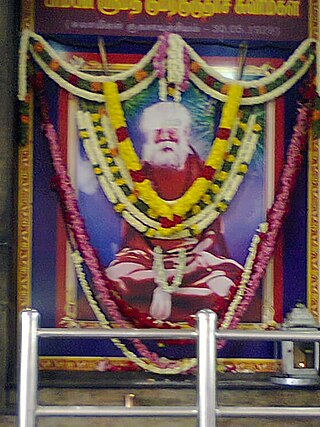
Pamban Gurudasa Swamigal, popularly known as Pamban Swamigal, was an Indian Tamil Saivite saint and poet. He was a devotee of the Tamil god Murugan and composed and wrote poems in his praise. His samadhi is located at Tiruvanmiyur, Chennai.

Sattainathar temple, Sirkazhi is a Hindu temple dedicated to Shiva located in Sirkali, Tamil Nadu, India. The temple is incarnated by the hymns of Thevaram and is classified as Paadal Petra Sthalam. It is an ancient temple complex with three different Shiva shrines in three stories.

Thiruvavaduthurai Adheenam is a Saivite mutt based in the town of Thiruvavaduthurai in Kuthalam taluk of Mayiladuthurai District, Tamil Nadu, India. The adheenam maintains the Mayuranathaswami temple at Mayiladuthurai. As of 1987, there were a total of 15 Shiva temples under the control of the adheenam.

Vaduvur Veeravalli Srinivasa Desikachariar was an Indian scholar. He studied Sanskrit and published several books. In 2001, he received the Rashtrapathi Award from the President of India as a Sanskrit scholar, one of the highest awards awarded by the Indian state.
Madurai Adheenam is the oldest Saivite adheenam, a form of Hindu monastery, in South India. It was established more than 1,300 years ago, and is said to have been rejuvenated by Thirugnana Sambandar. It is located near the Meenakshi Amman Temple in Madurai, Tamil Nadu, one of the most important Shiva–Shakti shrines. It is an active centre of Saiva Siddhanta philosophy.
Hinduism in Tamil Nadu finds its earliest literary mention in the Sangam literature dated to the 5th century BCE. The total number of Tamil Hindus as per 2011 Indian census is 63,188,168 which forms 87.58% of the total population of Tamil Nadu. Hinduism is the largest religion in Tamil Nadu.
Desikar, Desigar or Pandaram is a Tamil-speaking pandaram community from the Indian states of Tamil Nadu and Kerala. They are particularly priests and land owners.

The Hindu Religious and Charitable Endowments Department of the Government of Tamil Nadu manages and controls the temple administration within the state. The Tamil Nadu Hindu Religious and Charitable Endowments Act XXII of 1959 controls 36,425 temples, 56 mutts or religious orders, 1,721 specific endowments and 189 trusts.

